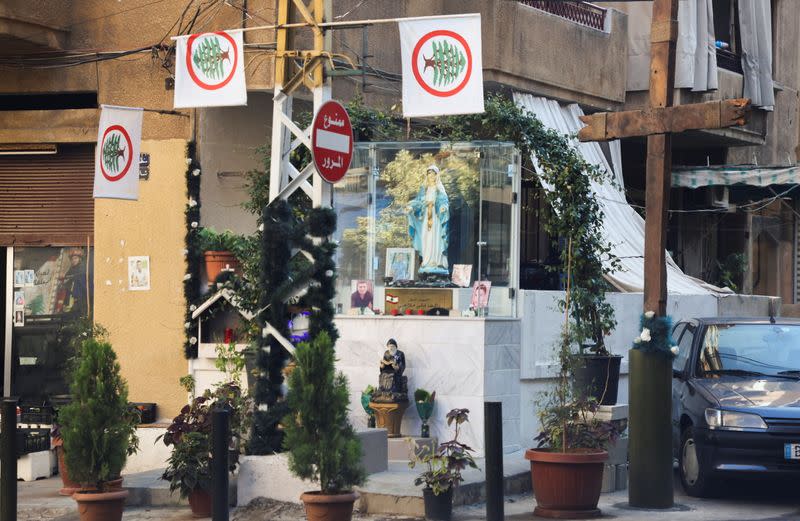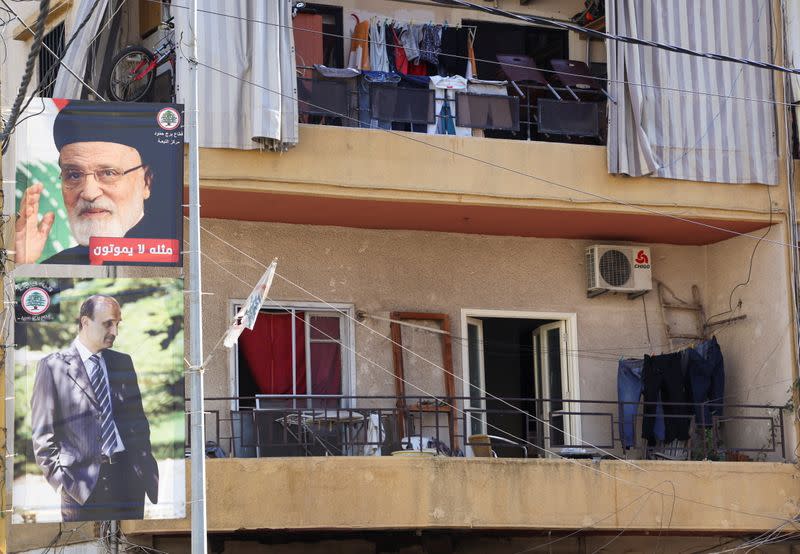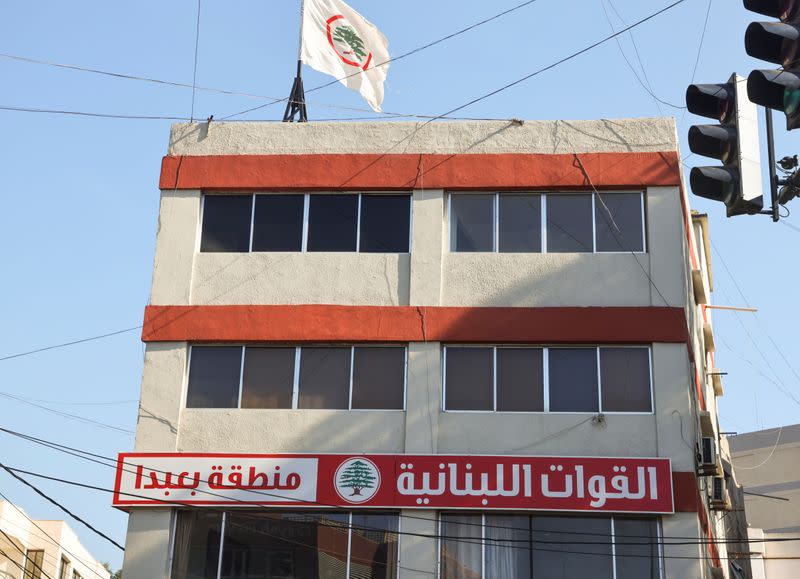Factbox-What is the Lebanese Forces party?
BEIRUT (Reuters) - The leader of the Christian Lebanese Forces party denied on Thursday his group has any fighters, rebutting claims by Shi'ite Hezbollah that he has assembled a militia as the fallout of deadly violence in Beirut last week continues to roil Lebanon.
The standoff is fuelling concerns over Lebanon's as the country grapples with a devastating two-year-long economic meltdown.
What is the Lebanese Forces?
ESTABLISHED IN CIVIL WAR
- The LF was established in 1976 as Lebanon descended into civil war. Bashir Gemayel, a Maronite Christian, created the LF by unifying an array of Christian militias including the armed wing of his family's Kataeb, or Phalange, party.
- It fought numerous adversaries, notably the Palestine Liberation Organisation - which controlled swathes of Lebanon at the time - and was backed by Israel. The LF's Lebanese foes included Walid Jumblatt's Druze militia.
- Gemayel was assassinated in 1982, a month after he was elected president after Israel invaded all the way to Beirut. The killing triggered the massacre by Christian militiamen of Palestinian civilians at the Sabra and Shatilla refugee camps.
- In 1983, the LF was defeated by Druze fighters in the Chouf mountains, leading some 250,000 Christians to flee the area, the biggest single sectarian displacement of the war.
- Samir Geagea, who rose through the ranks under Gemayel, took control of the LF in 1986. Under his command, the LF remained the most powerful Christian militia and ran a Christian enclave.
- The final years of the civil war were marked by a war between the LF and then-army commander Michel Aoun, who was head of one of the two rival Lebanese governments at the time, for control of the Christian area. This conflict, known as the "war of elimination", heaped destruction on Christian areas.
FORCED UNDERGROUND
- The LF agreed to the peace agreement that ended civil war and ceded control of its territory and weapons to the army in 1991. But tensions quickly surfaced between the LF and the new, Damascus-dominated order in Beirut as it became clear the Syrian army was not going to withdraw as set out in the agreement.
- In 1994, Geagea was arrested and put on trial for bombing a church and political killings in the war. He denied the accusations, saying he was the target of a politically motivated prosecution. Asked about cases brought against him from that time, Geagea has said they were fabricated by the Syrian-Lebanese security apparatus.
- He was acquitted of the church bombing but convicted of political killings. He spent 11 years in solitary confinement, the only militia leader to go to jail, while others benefited from an amnesty and took cabinet posts.
- The Syria-backed Lebanese authorities banned the LF in 1994, jailing many LF activists and seizing its assets.
OPPOSING HEZBOLLAH
- A new phase began in 2005 when the Syrian army withdrew from Lebanon following Rafik al-Hariri's assassination. Geagea was released from prison.
- The LF joined an anti-Syrian alliance including civil war foes in confronting pro-Damascus factions, chief among them the Iran-backed Hezbollah.
- Like Hezbollah's other opponents, the LF believes the group's arsenal undermines the state and sees it as a major factor contributing to Lebanon's other problems.
- The LF has vociferously stuck by this position while some of Hezbollah's other critics have set the issue to one side, saying the question of Hezbollah's weapons can only be addressed by foreign powers. With this hawkish stance, the LF is widely seen as one of Saudi Arabia's last Lebanese allies.
- The second largest Christian party in parliament, the LF has stayed out of the cabinet since a popular uprising against the sectarian elite in 2019. It says Lebanon's problems can only be fixed by a cabinet that is independent of political factions.
- The LF, which says it remains a political party with no military wing, has a decades-long rivalry with another Christian faction supporting now-President Michel Aoun in the Free Patriotic Movement he founded.
(Writing by Tom Perry, Editing by William Maclean)

 Yahoo Movies
Yahoo Movies 


